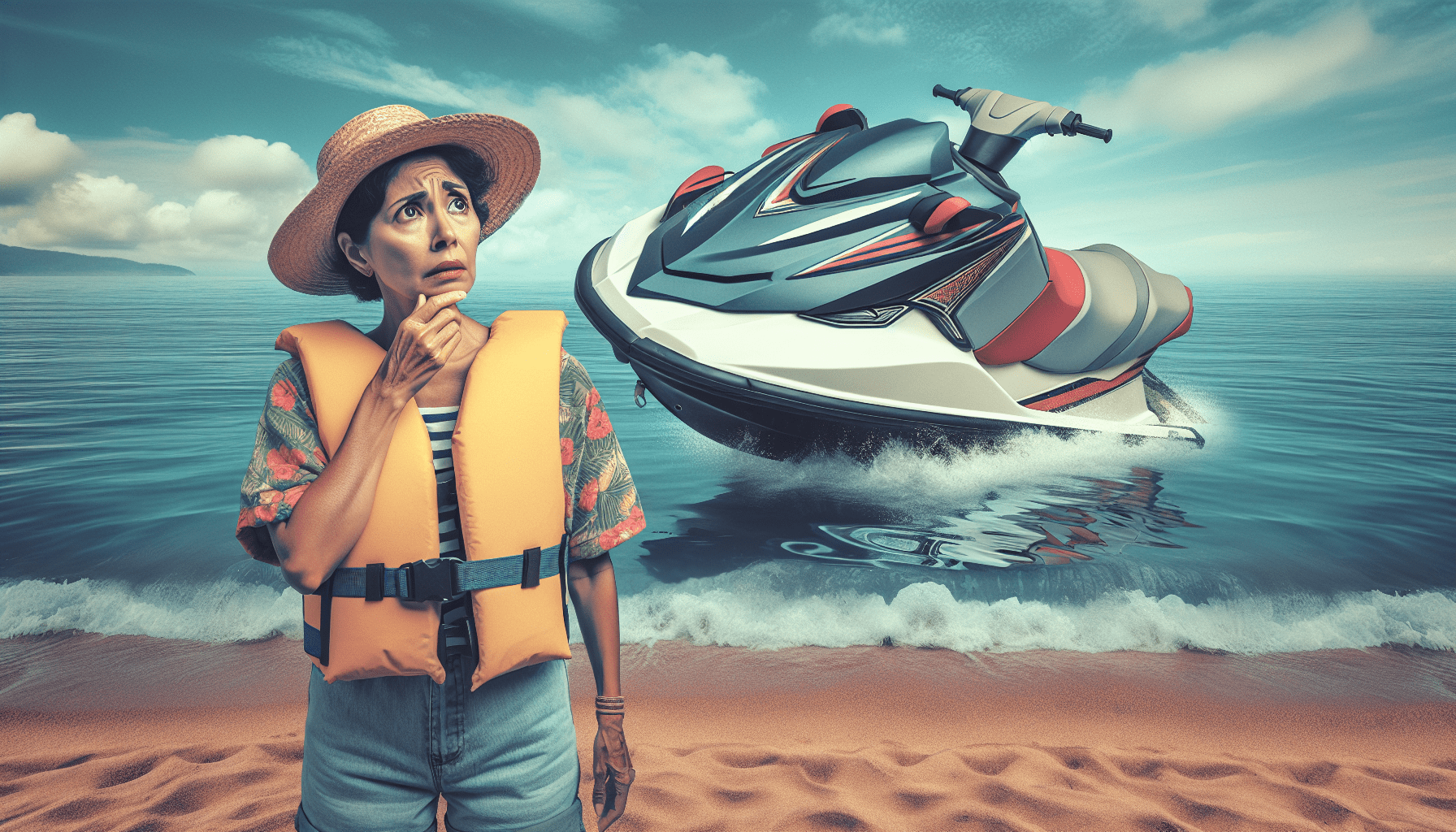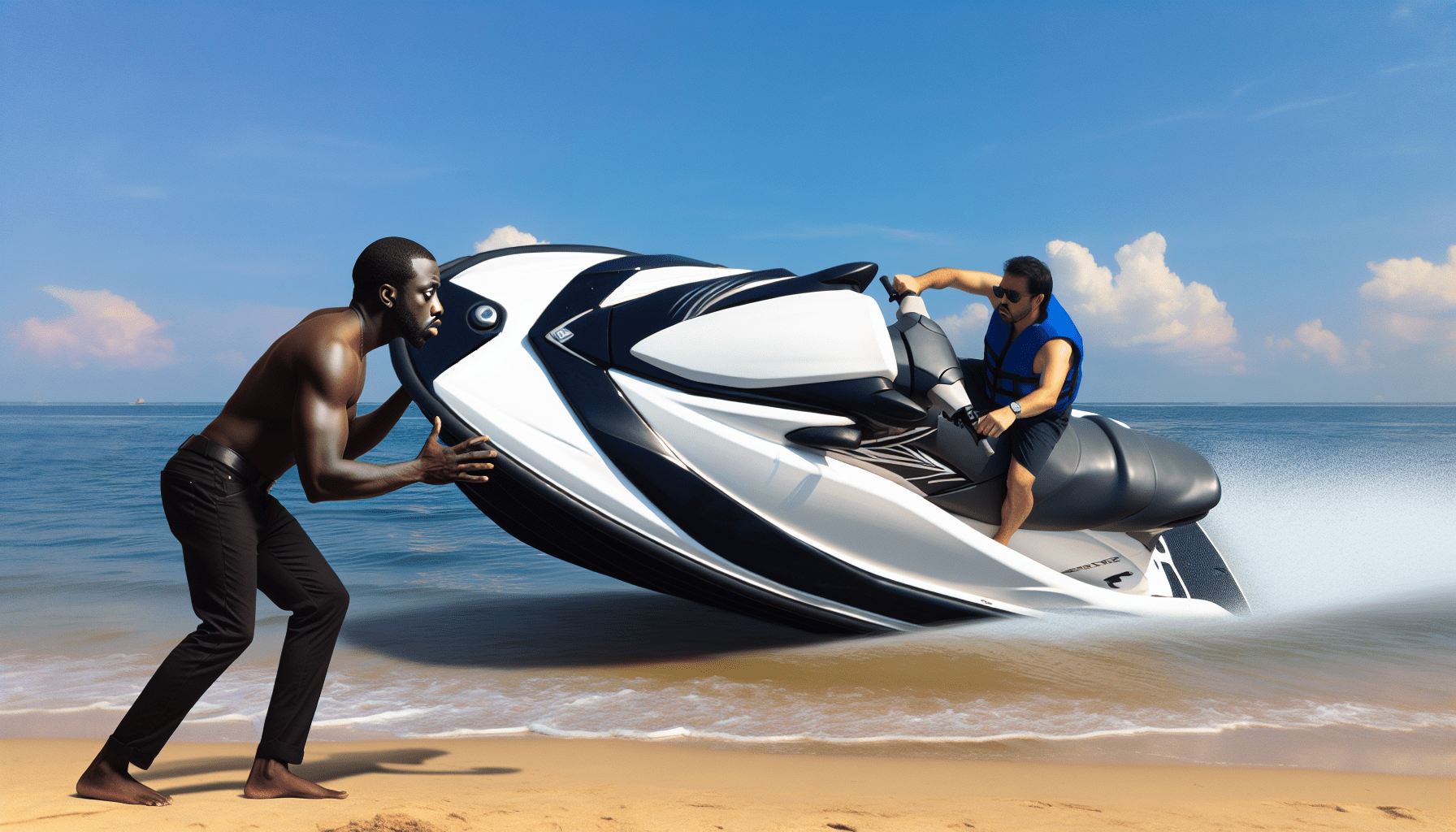Why Does My Jet Ski Keep Tipping Over?

Are you tired of constantly tipping over on your jet ski and wondering why it keeps happening? Look no further for answers than A2Z Powersport, the go-to company that knows all about jet skis and the industry. With their expertise and knowledge, they can help you understand the reasons behind the tipping and provide solutions to prevent it from happening. Located at Fort Morgan Marina in Orange Beach, AL, A2Z Powersport is the place to go for jet ski rentals and all your watercraft needs. Stop by or contact them today to book your jet ski adventure and say goodbye to those frustrating tip-overs!
Understanding the Causes of Jet Ski Tipping
Jet skiing is an exhilarating water sport that provides endless thrills and excitement. However, it is not uncommon for jet skis to tip over, causing riders to be thrown off and potentially leading to accidents and injuries. In order to stay safe and enjoy your jet skiing experience to the fullest, it is crucial to understand the causes of jet ski tipping. By being aware of these factors, you can take the necessary precautions and make informed decisions on the water.
Excessive Speed
One of the primary causes of jet ski tipping is excessive speed. When riders push their jet skis to their limits and travel at high speeds, it becomes more difficult to maintain balance and stability. This is especially true for inexperienced riders who may struggle to control the jet ski at high speeds. To avoid tipping over due to excessive speed, it is important to adhere to safe speed limits and exercise caution while operating the jet ski.
Improper Weight Distribution
Another factor that can contribute to jet ski tipping is improper weight distribution. Jet skis are designed to be stable when the weight is evenly distributed. However, if the weight is shifted too far to one side or towards the back of the jet ski, it can cause imbalance and increase the likelihood of tipping over. To maintain stability, it is crucial to distribute the weight properly by positioning the rider and passengers accordingly.
Rough Water Conditions
Jet ski tipping can also occur due to rough water conditions. When the water is choppy or there are large waves, it becomes challenging to navigate and maintain control of the jet ski. The unpredictable nature of rough water can cause the jet ski to lose balance and tip over. It is crucial to be aware of the water conditions and adjust your speed and approach accordingly to avoid accidents.
Inexperienced Riders
Inexperienced riders are more prone to jet ski tipping due to a lack of knowledge and experience in handling the watercraft. Without proper training and practice, it can be difficult to maneuver the jet ski effectively and maintain stability. To mitigate the risks associated with inexperience, it is highly recommended for novice riders to take a jet ski safety course. These courses provide valuable knowledge and practical skills that can greatly enhance safety on the water.
Factors Contributing to Excessive Speed
Excessive speed is a significant contributing factor to jet ski tipping. Understanding the underlying factors that can lead to excessive speed is crucial in preventing accidents and maintaining stability on the water.
Powerful Engine
One of the main causes of excessive speed is a powerful engine. Jet skis are equipped with high-performance engines that can reach impressive speeds. However, riders must exercise caution and be aware of the power of their jet ski. It is important to familiarize yourself with the capabilities of your watercraft and avoid pushing it beyond safe limits.
Lack of Familiarity with the Jet Ski
Another factor that can contribute to excessive speed is a lack of familiarity with the jet ski. If you are not fully acquainted with the controls and capabilities of your watercraft, it can be easy to unintentionally accelerate to unsafe speeds. It is essential to take the time to understand the features and functions of your jet ski before taking it out on the water.
Lack of Control and Braking Techniques
A lack of control and proper braking techniques can also lead to excessive speed. Riders who struggle to maintain control of the jet ski may find themselves accelerating unintentionally, making it difficult to slow down or stop when needed. It is crucial to practice braking techniques and learn how to effectively control the speed of the jet ski to avoid accidents caused by excessive speed.
Proper Weight Distribution for Stability
Maintaining proper weight distribution is essential for stability and balance on a jet ski. Understanding the effects of uneven weight distribution and knowing how to position riders and secure gear can greatly enhance safety on the water.
Effects of Uneven Distribution
Uneven weight distribution can have a significant impact on the stability of a jet ski. When the weight is concentrated on one side or towards the back, it can cause the jet ski to become unbalanced and increase the likelihood of tipping over. It is important to distribute the weight evenly by positioning the rider and passengers in a way that maintains equilibrium.
Positioning of Rider and Passengers
Properly positioning the rider and passengers is crucial for maintaining stability on a jet ski. It is recommended to have the rider sit in the center of the seat, keeping their weight centered. Passengers should be seated in a way that evenly distributes their weight on both sides of the jet ski. By following these positioning guidelines, you can ensure that the weight is evenly distributed and the jet ski remains stable.
Securing Gear and Equipment
In addition to properly positioning the rider and passengers, securing gear and equipment is essential for maintaining stability. Unsecured gear can shift during the ride, potentially causing imbalance and increasing the risk of tipping over. It is important to securely fasten any gear or equipment to the jet ski to minimize the chances of instability caused by shifting weight.
Navigating Rough Water Conditions
Rough water conditions can pose significant challenges for jet ski riders and increase the chances of tipping over. By understanding wave patterns, adjusting speed and approach, and practicing proper maneuvering techniques, riders can navigate rough water conditions safely.
Understanding Wave Patterns
Understanding wave patterns is crucial for navigating rough water conditions successfully. Waves can come from various directions and have different sizes and strengths. It is important to observe the waves and anticipate their movements to adjust your approach and maintain stability. By learning to read wave patterns, you can make informed decisions that will minimize the risk of tipping over.
Adjusting Speed and Approach
When faced with rough water conditions, it is important to adjust your speed and approach accordingly. Slowing down can provide more control and stability, allowing you to maneuver through the waves with greater ease. Additionally, approaching waves at an angle rather than head-on can minimize the impact and reduce the chances of tipping over.
Proper Maneuvering Techniques
Practicing proper maneuvering techniques is essential for navigating rough water conditions successfully. By utilizing techniques such as leaning into turns, using the throttle effectively, and keeping a firm grip on the handlebars, riders can maintain control and stability. It is important to practice these techniques in a controlled environment before venturing into rough water conditions.
Tips for Inexperienced Riders
Inexperienced riders are more susceptible to accidents and tipping over. By taking a jet ski safety course, practicing basic handling and control, and gradually increasing speed and performance, novice riders can enhance safety and minimize the risk of accidents.
Taking a Jet Ski Safety Course
One of the best ways for inexperienced riders to improve their skills and knowledge is by taking a jet ski safety course. These courses provide comprehensive training on various aspects of jet skiing, including safety guidelines, handling techniques, and emergency procedures. By investing in professional instruction, riders can gain the confidence and skills needed to navigate the water safely.
Practicing Basic Handling and Control
Practicing basic handling and control is crucial for inexperienced riders. Before venturing out into open waters, it is essential to familiarize yourself with the controls and functionalities of the jet ski. Start by practicing basic maneuvers such as turning, stopping, and accelerating in a safe and controlled environment. Through consistent practice, riders can improve their handling skills and build confidence on the water.
Gradually Increasing Speed and Performance
Inexperienced riders should gradually increase their speed and performance over time. It is important to start at a comfortable pace and progressively challenge yourself as you gain more experience and confidence. Gradual progression allows riders to become familiar with the jet ski’s capabilities and adapt to different riding conditions without compromising safety.
Impact of Jet Ski Modifications
Jet ski modifications, such as aftermarket accessories and add-ons, can have a significant impact on stability. It is crucial to consider proper installation and stability considerations, as well as seek expert advice when making modifications to your watercraft.
Aftermarket Accessories and Add-ons
Aftermarket accessories and add-ons can enhance the functionality and aesthetics of a jet ski. However, it is important to choose accessories that are compatible with your watercraft and do not compromise stability. Adding excessive weight or installing accessories that alter the center of gravity can increase the chances of tipping over. Careful consideration should be given to the impact of modifications on stability.
Proper Installation and Stability Considerations
Proper installation of aftermarket accessories is essential for maintaining stability. It is recommended to seek professional assistance or carefully follow manufacturer guidelines when installing accessories or making modifications. Improper installation can lead to instability and increase the risk of tipping over. Ensuring that modifications are installed correctly and do not compromise the integrity of the watercraft is crucial for safe jet skiing.
Expert Advice from A2Z Powersport
When it comes to jet ski modifications and stability considerations, seeking expert advice can provide valuable insights. A2Z Powersport, a renowned jet ski specialist, offers expert guidance and assistance to riders looking to enhance their watercraft. Their knowledgeable team can assess the impact of modifications on stability and provide recommendations that prioritize safety and performance.
Maintenance and Inspection for Stability
Regular maintenance and inspection of the jet ski are paramount to ensuring stability and safety on the water. By checking the hull integrity, inspecting steering and control systems, and monitoring fuel and oil levels, riders can identify potential issues and address them before they compromise stability.
Regular Check of Hull Integrity
The hull of a jet ski plays a critical role in its stability and buoyancy. Regularly checking the hull integrity is important to identify any cracks, dents, or other damages that can compromise stability. Small issues can worsen over time, so ensuring that the hull is in good condition is essential for safe jet skiing.
Inspecting Steering and Control Systems
The steering and control systems of a jet ski are vital for maintaining stability and control. Regularly inspecting these systems, including the handlebars, throttle, and brakes, is crucial to identify any loose or malfunctioning components. Proper functioning of the steering and control systems is essential for maneuvering the jet ski effectively and preventing accidents.
Monitoring Fuel and Oil Levels
Monitoring fuel and oil levels is an essential part of jet ski maintenance. Insufficient fuel can lead to loss of power and instability, while inadequate oil levels can cause damage to the engine. Regularly checking and topping up fuel and oil ensures that the jet ski operates smoothly and maintains stability on the water.
Jet Ski Design and Functionality
The design and functionality of a jet ski can greatly impact stability and performance. Understanding factors such as hull shape and design, weight, and center of gravity, as well as internal and external components, is crucial for making informed decisions and selecting a jet ski that meets your needs.
Hull Shape and Design
The hull shape and design play a significant role in the stability and handling of a jet ski. Different hull designs, such as flat-bottomed or deep-V hulls, offer different characteristics and performance capabilities. It is essential to consider your riding style and preferences when selecting a jet ski with the appropriate hull shape and design for optimal stability.
Weight and Center of Gravity
The weight and center of gravity of a jet ski are important factors in determining its stability. Jet skis with a lower center of gravity tend to be more stable and less likely to tip over. Additionally, excessive weight can negatively impact stability and maneuverability. Understanding the weight and center of gravity of a jet ski is crucial when making purchasing decisions.
Internal and External Components
The internal and external components of a jet ski, such as the engine, propulsion system, and steering mechanism, greatly influence its stability and performance. It is important to choose a jet ski with reliable and well-designed components to ensure safe and enjoyable rides. Conducting thorough research and seeking recommendations from experts, such as A2Z Powersport, can help you make informed decisions and select a reliable watercraft.
Importance of Personal Protective Equipment
When engaging in any water sport, including jet skiing, personal protective equipment (PPE) is of utmost importance. Wearing a Coast Guard-approved life jacket, utilizing appropriate safety gear, and protecting your ears and eyes are essential for ensuring personal safety and minimizing the risks associated with accidents.
Wearing a Coast Guard-approved Life Jacket
Wearing a Coast Guard-approved life jacket is a non-negotiable safety requirement when operating a jet ski. Life jackets are designed to keep riders afloat and provide buoyancy in the event of an accident. It is crucial to select a life jacket that fits properly and is capable of supporting your weight. Wearing a life jacket significantly reduces the risk of injury or drowning in the event of a tip-over or collision.
Utilizing Appropriate Safety Gear
In addition to a life jacket, utilizing appropriate safety gear is essential. This includes items such as a wetsuit or drysuit, gloves, and protective footwear. These gear not only offer protection from cold water and potential injuries but also provide added flotation and insulation in case of emergencies. By investing in high-quality safety gear and wearing it consistently, riders can significantly enhance their safety on the water.
Protecting Ears and Eyes
Protecting your ears and eyes is often overlooked but crucial for maintaining personal safety while jet skiing. The exposure to wind, water, and engine noise can cause damage to the ears if left unprotected. Wearing earplugs or earmuffs can help reduce the risk of hearing loss or damage. Additionally, wearing goggles or sunglasses protects your eyes from harmful UV rays, wind, and water splashes, ensuring clear vision and preventing potential accidents.
Expert Guidance and Assistance
When it comes to jet skiing, the expertise of professionals can be invaluable. A2Z Powersport, a trusted and knowledgeable jet ski specialist, offers expert guidance and assistance to help riders stay safe and informed. Whether you’re in need of advice on modifications, maintenance, or purchasing decisions, the experts at A2Z Powersport are equipped with the knowledge and experience to assist you.
A2Z Powersport – A Jet Ski Specialist
As a go-to company for all things related to jet skis, A2Z Powersport is dedicated to offering top-notch services, guidance, and resources to jet ski enthusiasts. Their team of experts is well-versed in the industry and can provide valuable insights into jet ski stability, safety, and performance. By relying on A2Z Powersport, you can access the expertise and support needed to make the most of your jet skiing experience.
Rental Services at A2Z Powersport
For those who do not own a jet ski, A2Z Powersport also offers rental services. Renting a jet ski from a reputable company like A2Z Powersport ensures that you have access to well-maintained and properly inspected watercraft. Their rental services are ideal for individuals who want to enjoy the thrill of jet skiing without the commitment of owning a personal watercraft.
Location and Contact Details
A2Z Powersport is conveniently located at the Fort Morgan Marina in Orange Beach, AL. Situated at 1577 AL-180 W, Orange Beach, AL 36542, the marina offers easy access to the water and a picturesque setting for jet skiing. To learn more about their services and get in touch with their team, you can contact them at (954) 296 1862 or through email at bookings@a2zpowersport.com.
In conclusion, understanding the causes of jet ski tipping is essential for a safe and enjoyable experience on the water. Factors such as excessive speed, improper weight distribution, rough water conditions, and inexperience can all contribute to tipping over. By following the recommended tips and guidelines outlined in this article, riders can minimize the risk of accidents and enhance their stability and safety. Additionally, seeking expert guidance from professionals like A2Z Powersport can provide valuable insights and assistance in all aspects of jet skiing, from safety to maintenance and modifications. So, whether you own a jet ski or are looking to rent one, prioritize safety, consult experts, and enjoy the exhilaration of this thrilling water sport.








